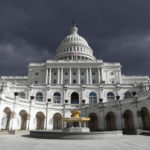 A few years ago, before the real estate market got crazy hot (and before we changed the OREF Sale Agreement form), it wa not unusual for a buyer to submit their preapproval letter to their seller, go under contract, and then try to find other lenders who might offer better rates or terms.
A few years ago, before the real estate market got crazy hot (and before we changed the OREF Sale Agreement form), it wa not unusual for a buyer to submit their preapproval letter to their seller, go under contract, and then try to find other lenders who might offer better rates or terms.
But in 2013, TRID[1] was enacted as a part of the government’s response to the 2007/8 Financial Crisis; Dodd Frank, the massive 2010 2,300 page rewrite of financial regulations (containing another 22,000 pages of administrative rules) was created, and the Consumer Finance Protection Agency, or “CFPB”, became its most prominent offspring. Continue reading “Why Oregon Homebuyers Should Shop Their Loans Before Going Under Contract”








